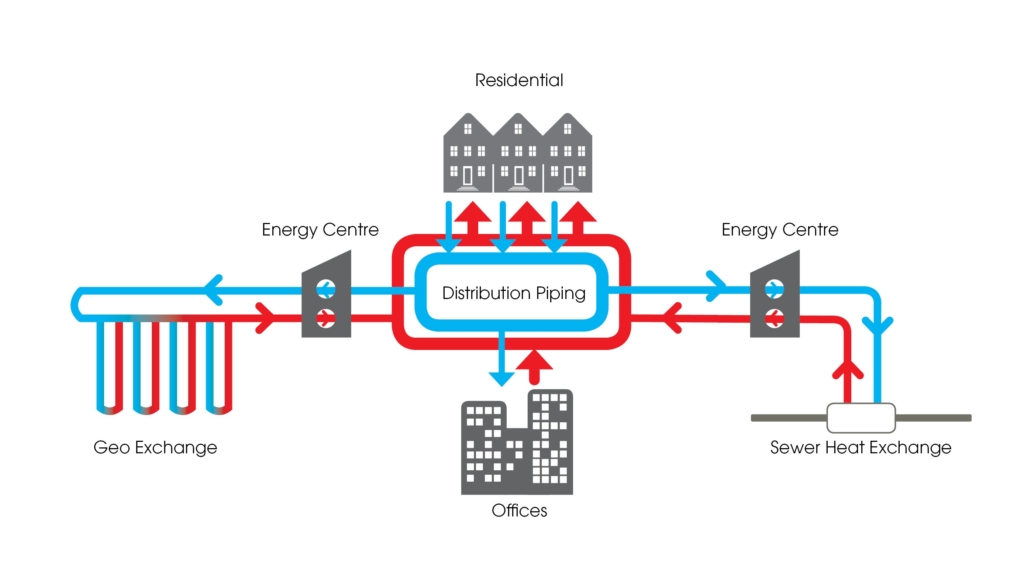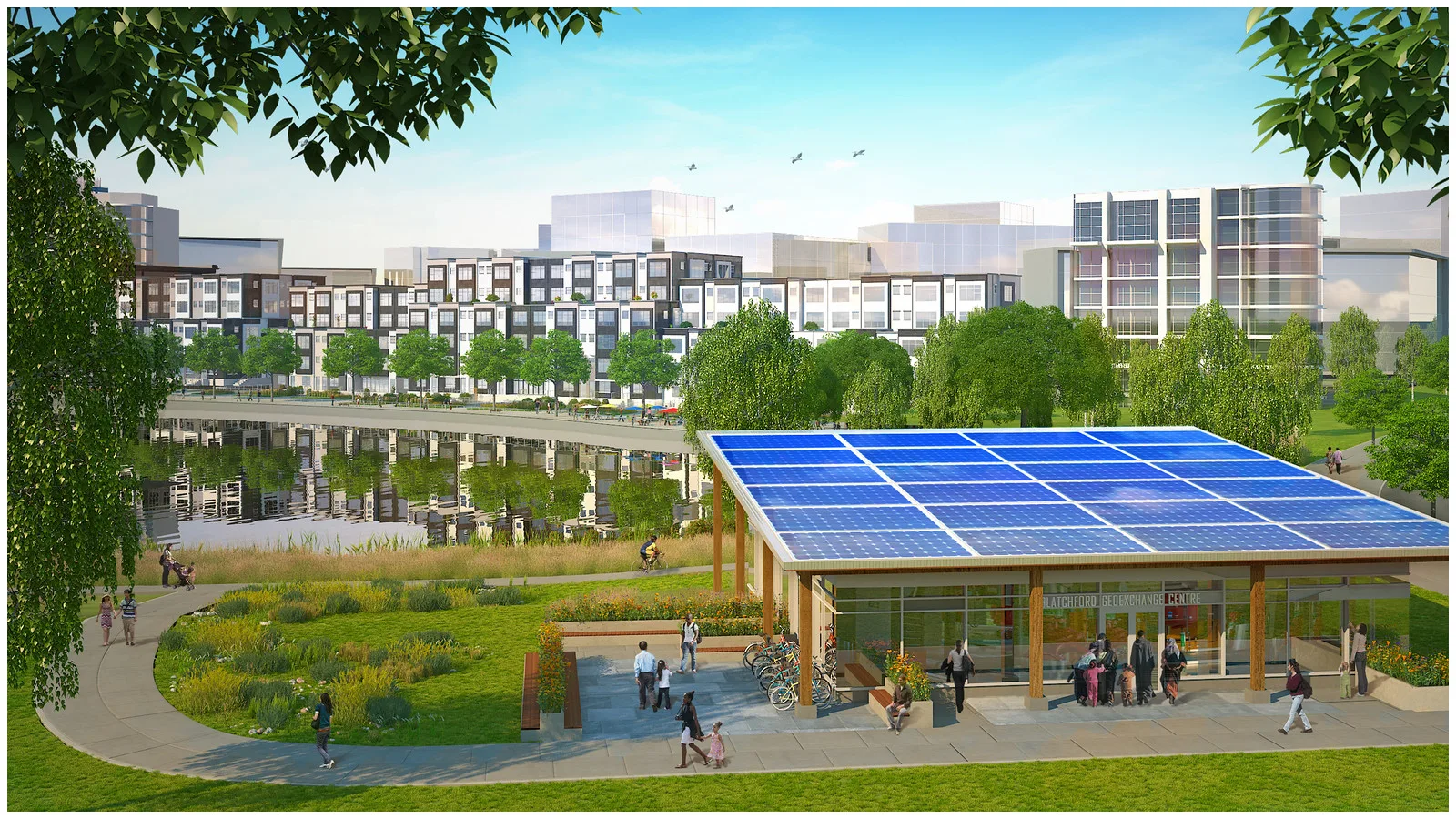The Blatchford project took a significant step forward on December 8, 2016, in the plan to create one of the world’s largest sustainable communities. Edmonton City Council has
approved the framework for a Renewable Energy Utility for the community as well as $19.4 million to fund the initial stages of the system.
The Renewable Energy Utility is based on a District Energy Sharing System.The system will deliver heating, cooling and hot water to the buildings in Blatchford and is a critical component in achieving Council’s ambitious goals for a carbon-neutral community that uses 100 per cent renewable energy.
“Blatchford will influence the way the world thinks about sustainable development, but only if our approach to energy usage is ambitious and creative with an ongoing commitment to visionary leadership,” says Mayor Don Iveson. “Building a District Energy Sharing System that is flexible to incorporate future technologies and that will eventually serve 30,000 residents is a perfect example of how this neighbourhood will help to position Edmonton as a leader in sustainability.”
The District Energy Sharing System is designed to reduce overall energy requirements of Blatchford. The system is comprised of three main features, including energy sharing between buildings, shallow geo-exchange harnessing geothermal energy, and sewer heat recovery. The system is part of a larger energy strategy for the community.

The District Energy Sharing System centralizes the production of heating and cooling and is comprised of three main features — energy exchange between buildings, geo-exchange and sewer-heat recovery.
District Energy Sharing System Quick Facts:
- While district energy systems exist across the world, the scale and size of the system at Blatchford make it first of its kind in North America.
- The heating, cooling (air-conditioning) and production of hot water are provided to buildings through a centralized system that allows the same unit of energy to be shared. The system can exchange energy between buildings by capturing excess energy from buildings and sharing it with other buildings across the neighbourhood. It can also share energy between seasons by capturing and storing summer heat energy to be used in the winter months.
- The system was developed by a team of Canada’s leading experts in green energy, and the strategy provides a tailor-made, whole site solution that leverages unique on-site resources.
- At least 56 per cent of Blatchford’s energy needs will be delivered through renewable means. The investigation for how to provide the other 44 per cent for plug loads (appliances, lights, etc) is underway.
- Greenhouse gas emissions from the buildings in Blatchford will be approximately 75 per cent less than in a ‘business as usual’ community. In Blatchford, this equates to a reduction of about 42,000 tonnes/year of greenhouse gases, which is equal to the CO2 emissions from burning approximately 20 million kilograms of coal or consuming approximately 18 million litres of gasoline.
- The system has the ability to potentially incorporate technologies not yet in existence.
The District Energy Sharing System is an extremely energy efficient way to provide heating, cooling and hot water to homes. Combined with the energy efficient building standards that Blatchford will use, the system will make great strides in achieving Council’s 100 per cent renewable and carbon neutral goals. Construction of the first stage of residential buildings and a section of the central park will begin in 2017.
